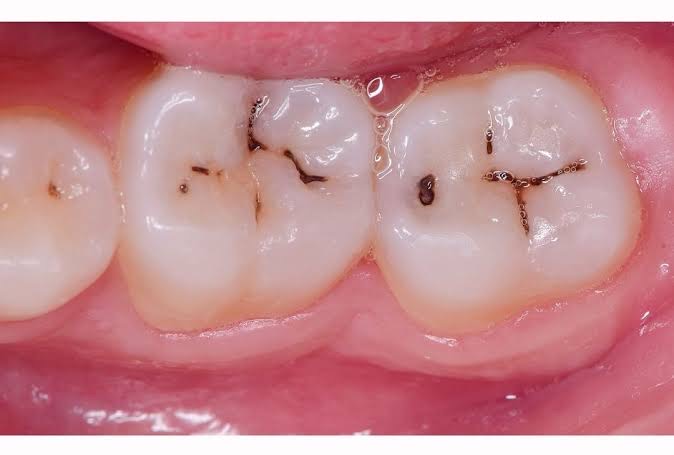Tooth decay, also known as dental caries or cavities, is a common dental problem affecting people of all ages. It is the destruction of the tooth structure due to the action of acids produced by bacteria in the mouth. This article will explore the causes, prevention, and treatment of tooth decay.
Causes of Tooth Decay
1. Bacteria in the Mouth
• The primary cause of tooth decay is the presence of specific bacteria, such as Streptococcus mutans, which thrive on the sugars and starches left on teeth from food and drinks.
2. Formation of Plaque
• Plaque is a sticky film that forms on teeth when bacteria feed on sugars and produce acids. If not removed regularly, plaque hardens into tartar, which can only be removed by a dentist.
3. Acid Production
• The acids produced by bacteria attack the tooth enamel, the hard outer surface of the tooth. Over time, repeated acid attacks weaken the enamel, leading to the formation of cavities.
4. Diet
• Frequent consumption of sugary and starchy foods and beverages contributes significantly to tooth decay. These foods provide the fuel that bacteria need to produce acids.
5. Poor Oral Hygiene
• Inadequate brushing and flossing allow plaque to build up on teeth, increasing the risk of decay.
6. Dry Mouth
• Saliva helps wash away food particles and neutralize acids. A decrease in saliva production, often caused by certain medications or medical conditions, can increase the risk of decay.
Symptoms of Tooth Decay
– Toothache: Persistent pain in the affected tooth, which can be mild to severe.
– Sensitivity: Increased sensitivity to hot, cold, or sweet foods and beverages.
– Visible Holes or Pits: Cavities may appear as visible pits or holes in the teeth.
– Discoloration: Dark spots or stains on the tooth surface.
– Bad Breath: Persistent bad breath or a bad taste in the mouth.
Prevention of Tooth Decay
1. Good Oral Hygiene Practices
– Brush your teeth at least twice a day with fluoride toothpaste.
– Floss daily to remove plaque and food particles between teeth.
– Use an antibacterial mouthwash to reduce the bacterial load in the mouth.
2. Healthy Diet
– Limit sugary and starchy foods and beverages.
– Eat a balanced diet rich in fruits, vegetables, and dairy products to support overall oral health.
3. Regular Dental Visits
– Visit your dentist regularly for check-ups and professional cleanings. Early detection of cavities allows for more straightforward and less invasive treatments.
4. Fluoride Use
– Use fluoride toothpaste and drink fluoridated water if available. Fluoride strengthens tooth enamel and makes it more resistant to decay.
5. Dental Sealants
– Dental sealants are a protective coating applied to the chewing surfaces of the back teeth. They can prevent food and bacteria from getting trapped in the grooves of the teeth.
Treatment of Tooth Decay
1. Fluoride Treatments
• For early-stage tooth decay, fluoride treatments can help remineralize the enamel and stop the progression of cavities.
2. Fillings
• For more advanced decay, a dentist will remove the decayed portion of the tooth and fill the cavity with materials such as amalgam, composite resin, or gold.
3. Crowns
• If the decay is extensive and has weakened the tooth, a crown (a cap that covers the tooth) may be necessary to restore its shape, strength, and function.
4. Root Canals
– If the decay has reached the tooth pulp (the inner part of the tooth containing nerves and blood vessels), a root canal may be required. This involves removing the infected pulp, cleaning the inside of the tooth, and sealing it.
– In severe cases where the tooth is too damaged to be saved, an extraction may be necessary. The missing tooth can then be replaced with a bridge, dental implant, or denture to restore function and appearance.
The Importance of Early Detection
Early detection of tooth decay is crucial for effective treatment and prevention of further damage. Regular dental check-ups allow dentists to identify early signs of decay and take appropriate action before cavities become more severe and painful.
The Role of Education and Awareness
Public awareness about the causes, prevention, and treatment of tooth decay plays a significant role in reducing its prevalence. Educational programs, especially for children and parents, can promote good oral hygiene practices and healthy dietary habits from a young age.
Tooth decay is a preventable condition that requires a combination of good oral hygiene, a healthy diet, regular dental visits, and preventive treatments. By understanding the causes and symptoms of tooth decay, individuals can take proactive steps to maintain their oral health and avoid the pain and complications associated with cavities. Regular dental care and early intervention are key to preserving a healthy, beautiful smile.


Pingback: How Smoking Affects Your Teeth and Gums - SimplExplainer